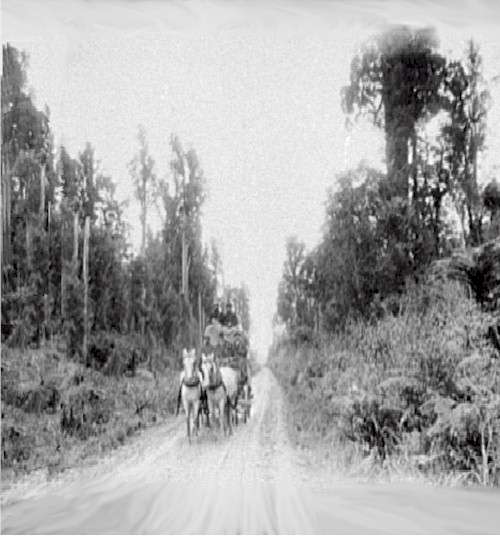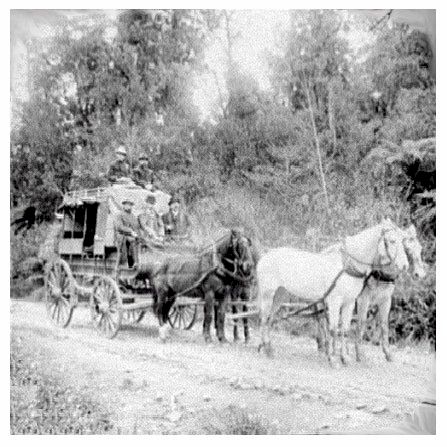When Mechanical Engineers Were King
What Was Life Like a Century Ago?The nineteenth century believed in science but the twentieth century does not. - Gertrude Stein What was life like in the late 1800s? I've seen pictures of Wellington from the era when our house was new.
The impression I have of the period is: ornate, lots of horses, too many clothes worn at once, lots of ships in the harbour, too much mud, an air of gentility. (Both these photos were taken in Wellington during that period.)
Winona, Minnesota in 1900Christmas Was Homebound, Dark, and Thoroughly CommercialAs local retailers made their final holiday pitches 100 years ago this week, Winona celebrated a Christmas season that was both utterly unlike, and yet very similar to, today's observances. One merchant ran an ad in Winona's 20 December 1900 Daily Herald that declared, "Only one place to buy holiday presents or clothing. The greatest assortment, the lowest prices and extra inducements. A fine art medallion with every $10.00 purchase. Go to the Hirsch Clothing Company." In some ways, the holiday that Winona celebrated 100 years ago was as different from today's as a "fine art medallion" is from a laptop computer. What may be the most basic difference is that, unlike most of today's Winona County residents, those in 1900 spent virtually no time on the highway. Automobiles were sufficiently well developed that long-distance travel in them was theoretically possible (Stanley Steamers were capable of speeds up to 120 mph during the first decade of the 20th century), but roads were another matter altogether. For a variety or reasons, the nation's highways were all but impassable in 1900 - to the point that they have been compared - unfavourably - with those of Turkey during the same era. Whatever long-distance travel did take place over the holidays was by train, and certainly not by airplane. The Wright Brothers' epoch-making "first flight" would not take place for another three years. Another fundamental difference between Winona's Christmas of 1900 and that of 2000 is that while this year's celebration will be electrified in every conceivable way, yesteryear's celebration was not. No one gave or received gifts needing batteries or power cords, electrical kitchen appliances were all-but unheard of, and "Christmas lights" usually meant "candles." The two greatest similarities between Christmases of today and those of yesteryear lie, in many people's minds, at opposite ends of a spiritual and commercial continuum. On one end, Christmas was, then as now, celebrated as a religious holiday, although that was a relatively new development in 1900. Prior to the 1800s, many religious denominations had been adamantly opposed to all Christmas observances, because the holiday had long been most widely observed by society's lower classes as an occasion for drunken revelry and licentiousness. At the other end of the spectrum, retailers exploited Christmas's commercial potential to the maximum possible extent, although the holiday gifts they offered were, by today's standards, very modest. The contents of most Christmas wish lists seldom got too much more exotic than such items as dolls, pocket knives, or comb-and-brush sets. Primitive box cameras were the height of high-tech gift giving in 1900. Source: The Winona Post December 2000
Ice Skating Provided Fine Opportunities for Winter SocialisingCold weather meant nothing but fun for one group of Winona youngsters 100 years ago this week. An item in the 13 December 1900 Winona Herald reported, "A movement is on foot among some of the young people of the city to have a skating party on Lake Winona some evening either this week or next. A band will furnish music and after skating during the early part of the evening the skaters will enjoy a supper at the residence of one of the party, after which the remainder of the evening will be spent in dancing." Ice skating was one of Winona's most popular entertainments 100 years ago. While some communities featured skating rinks (New York's Central Park rink drew tens-of-thousands of people per day during the mid-1800s), most people skated on the rivers, canals, lakes, and ponds near which their communities had been built. Ice skates were simple 100 years ago - little more than blades on frames designed to be strapped to the bottom of shoes or boots - but they weren't cheap. The 1902 Sears catalog offered a pair of primitive-looking blades for $2.38: the rough equivalent of $100 today. Nevertheless, people of all social classes found the means to go skating. One of the main reasons so many people skated was that there were few other forms of popular entertainment to be had. Movies would not be widely available for several more years, radio was still two decades away, and television was, for most people, a half-century or more in the future. The local opera house might feature travelling troupes of actors or musicians once or twice a week, and dances several times per month, but once the weather turned cold, there were almost always sociable skaters on nearby rivers and lakes. Unfortunately, the fact that virtually every stretch of frozen water was seen as a potential skating rink 100 years ago led to many thousands of tragedies. Drownings were common, not only as a result of skaters venturing onto thin ice, but also because ice harvesting - cutting blocks of ice for the following summer's refrigeration needs - left holes that often claimed nighttime skaters at unlit locations. Many rinks were lit, though, with what were, for some communities, among the first electric lights to be installed. The new technology added to skating's excitement and appeal, as did regular appearances by local brass bands, which were then among the mainstays of virtually every community. As other forms of entertainment became popular in the early 1900s, ice skating became less about socialising and more about sports. Figure skating was included at the 1908 Olympics, with ice hockey following 12 years later. Source: The Winona Post December 2000
A Century Ago - The Year Is 1901What a Difference a Century Can Make:
See also:
Pressing the "Up" key below will take you to a page about an elderly Victorian house in downtown Wellington, New Zealand (mine, to be exact). From
that page, you can jump to a page in the Information and Technology section containing predictions about the year 2000
written in both 1900 and in 1962. (Guess which one was more accurate!) Pressing the "Up" key at the bottom of either of those two pages will take you to the Index page for
their respective sections which will list thumbnail descriptions of contents. Thanks for visiting. |
 Animals
Animals Animation
Animation Art of Playing Cards
Art of Playing Cards Drugs
Drugs Education
Education Environment
Environment Flying
Flying History
History Humour
Humour Immigration
Immigration Info/Tech
Info/Tech Intellectual/Entertaining
Intellectual/Entertaining Lifestyles
Lifestyles Men
Men Money/Politics/Law
Money/Politics/Law New Jersey
New Jersey Odds and Oddities
Odds and Oddities Older & Under
Older & Under Photography
Photography Prisons
Prisons Relationships
Relationships Science
Science Social/Cultural
Social/Cultural Terrorism
Terrorism Wellington
Wellington Working
Working Zero Return Investment
Zero Return Investment
